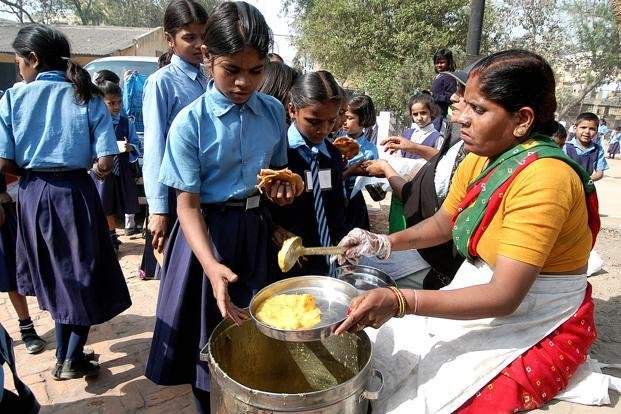50 students of a middle school in Bihar’s Bhojpur district fell ill after consuming the midday meal on Tuesday, officials said.
The incident occurred at Harnam Tola under Piro police station in the district. The victims were admitted to the referral hospital Piro for treatment and their conditions are said to be stable.
The police said that the school administration has given albendazole tablets to the students followed by the midday meal. After the meal, the students fell sick, with a majority complaining of stomach aches and vomiting.
The school teachers immediately informed the local police and took the children to the Piro referral hospital. The Education Department has initiated an inquiry into the matter.
India’s mid-day meal resumed in April after a two-year hiatus during the pandemic.
In a recent incident where one-liter milk is mixed with a bucket of water and chapattis served only with salt, shows the dark side of a great government scheme.
No doubt that the Mid-day meal scheme has got the potential to transform society in India, but the way it is being implemented on the ground bound us to think about its causes of failure.
What is the Mid-Day Meal Scheme?
Coupling nutrition with education is a noble idea; the mid-day meal is an initiative in the same direction. It is a centrally sponsored scheme where nutritious cooked food is served to the children at the school itself for their better overall development.
This scheme was started in the year 1995 when food grains are supplied to the children at the primary school. Later schools started serving cooked meals to the children after the recommendation of the Supreme Court.
National Food Security act 2013
The national food security act of 2013 covers the Midday meal. This act is also known as the Right to Food Act. The parliament of India passed this act with the aim to provide subsidised food grains to poor people.

Features of the Mid-day meal scheme
- Mid-day meals in all primary government schools are compulsoryChildren of 6 to 14 years, i.e. class 1 to 8th who enroll and attend the school is eligible.
- A hot cooked meal with the appropriate nutritional standard is served to children free of charge.
- Food with a minimum content of 300 calories of energy and 8 to 12 grams of protein per day is served for a minimum of 200 days in a year.
- All government and govt. aided schools are covered under the scheme, madarsa are also covered (supported under Sarva Shiksha Abhiyan).
- It is the world’s most extensive school nutrition program.
- Meals are served across 12.65 lakhs school, and 12 crore students are benefited from it.
Objectives of the Mid-Day Meal Scheme
- Boost students enrolment
- Helps to promote students attendance
- Serves as an incentive not only for the children but also for the parents as it has an implicit subsidy
- The attraction for children who are otherwise reluctant to go to school
- The nutritional impact which helps students in their learning
- Helps to solve deficiency-related diseases that are endemic in some areas of the country.
Disadvantages of Mid Day Meal Scheme
- Corruption is involved in the delivery system due to which children are getting low-quality and insufficient food.
- Lack of proper monitoring and supervision is also the biggest problem of this scheme.
- Sometimes reports have found dirtiness, and unhygienic conditions at kitchen shed in rural areas, to the extent of insects and lizards being spotted in food.
- Fake enrolments are also done to embezzle money.
- Reports have also shown children falling ill and being hospitalised due to the poor quality of the Mid-day meal.
Financial Provision for the Mid-day meal scheme
Both central and state government shares a central government-sponsored scheme but the funds. The shares fund in the ration of 75:25. The Central government provides the state government with rice wheat and other ingredients, as well as bear the expanse of constructing storerooms and kitchen sheds for cooking.
The union government gives a subsidy to the state government for transporting food articles from one place to another under prescribed norms. Besides the central government also shares the expenditure accrued on running the scheme as well as its monitoring under prescribed norms.
Under the law, not only does the Indian government put aside funding for the scheme, but it also ensures that those funds are used to feed children through programmes like the Public Distribution System and Integrated Child Development Services.
With the scheme slowly resuming, both teachers and parents want to ensure that their children return to school and eat.

